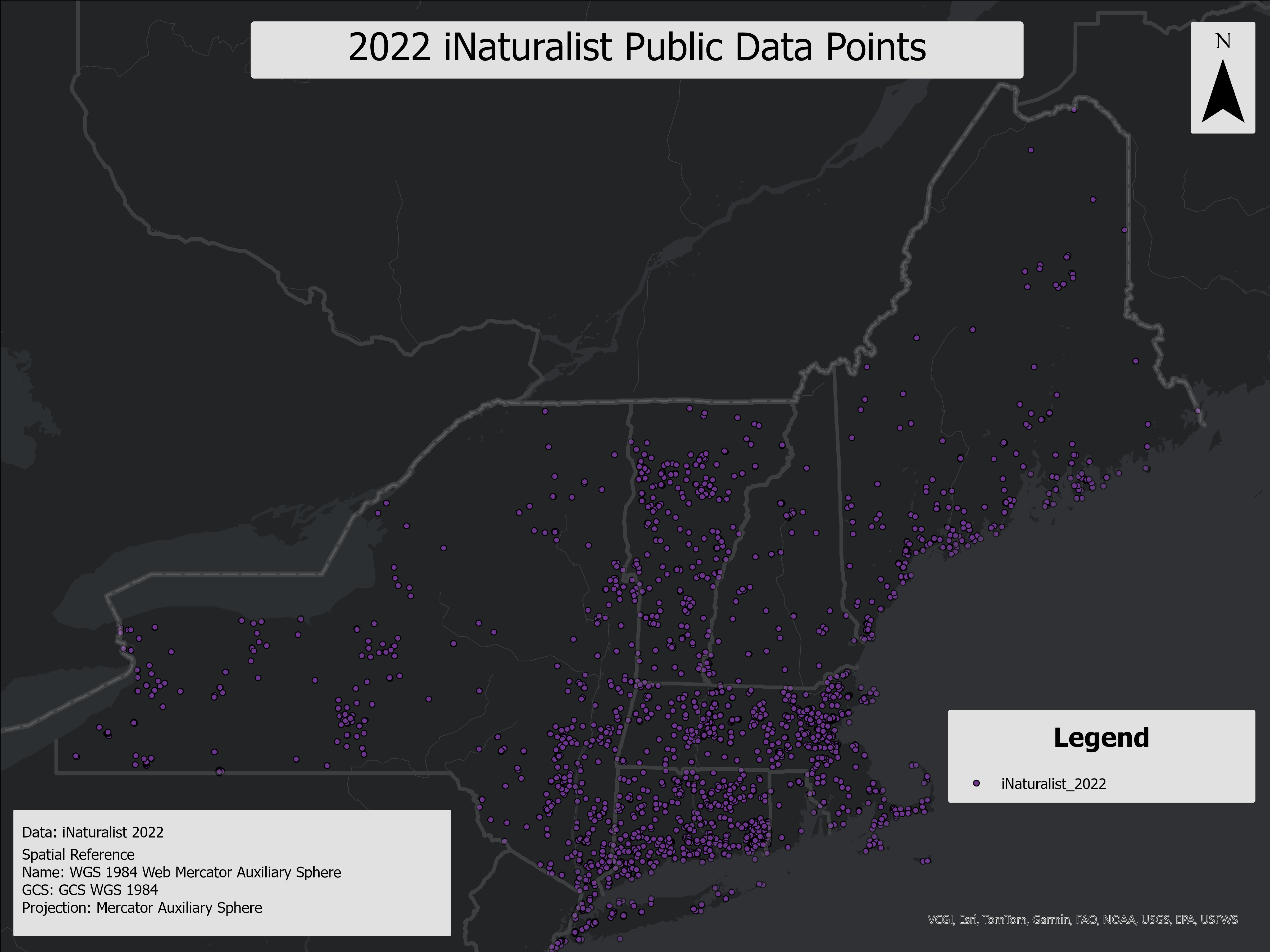
IMPACTS OF RECREATION ON FOREST ECOSYSTEMS
Overview:
- A literature review of studies monitoring recreation activity in the Northeast U.S.
- A series of expert interviews about recreation and forest health, revealing a range of needs for those working to effectively manage recreation in forests.
- Maps to support geospatial analyses of recreation and forest health: This project generated a series of geospatial products that can be used by land managers to analyze the relationships between recreation and forests. To date, the products available include a density map of recreational use of forests for both hiking and biking (based on STRAVA and iNaturalist data); a map of contiguous forest blocks considering trail and road buffers of three different sizes; a map of forest canopy health; and a map of soil suitability for recreation (a USGS Web Soil Survey product that has been included in the ArcGIS online portal). An accompanying technical report on the methods to produce the maps is available.
- A decision-support tool to help land managers and researchers select a method to monitor the impacts of recreation on forest health
This project is centered on the analysis of recreational use, forest health, and environmental impacts within the Northeastern U.S., using various geospatial layers that combine data from OpenStreetMap (OSM), Strava, iNaturalist, and NRCS Web Soil Survey. The primary aim of the project was to identify recreational hotspots, assess the suitability of soils for sustaining such activities, and evaluate forest canopy health based on NDVI deviations from long-term baselines.
The products generated from this project include comprehensive analyses of recreational trail use, soil suitability, and wildlife impact. By integrating user-generated activity data (such as Strava and iNaturalist) with spatial environmental data (like NRCS soils and NDVI), the project provides insights into areas where recreational activity may pose risks to forest ecosystems or where management actions could be prioritized.
These layers are designed to be publicly available, ensuring that land managers, conservationists, and other stakeholders can utilize them to inform sustainable trail management, conservation efforts, and recreation planning. The datasets provide valuable tools for understanding the balance between recreational use and environmental stewardship, especially in regions where trails intersect with sensitive soils or wildlife habitats.
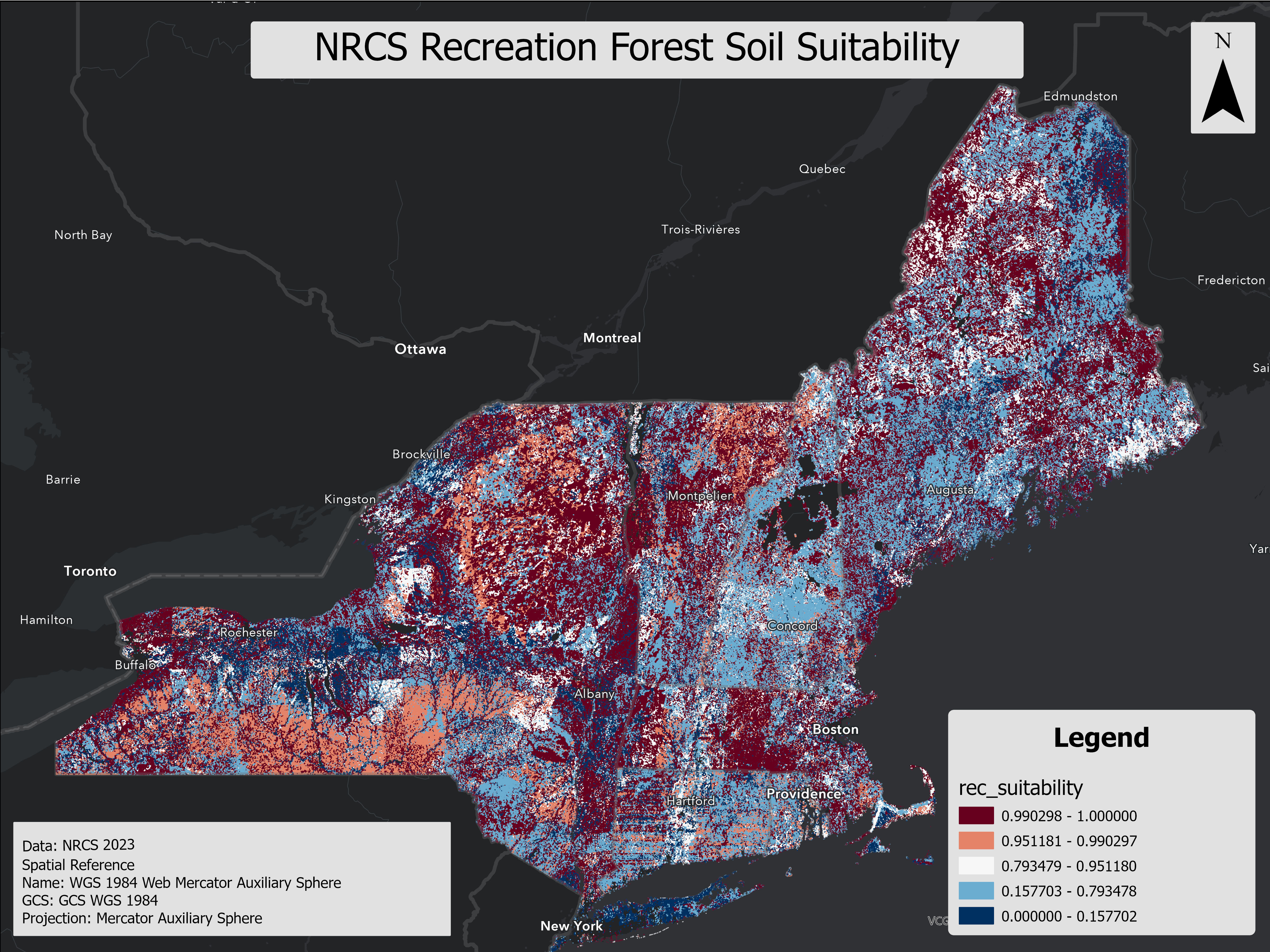
This layer evaluates soil suitability for recreational development, specifically focusing on paths and trails. It assesses key soil characteristics such as erosion potential, drainage, stone content, and load-bearing capacity to determine the feasibility of recreational infrastructure. The layer provides three interpretive ratings—Not Limited, Somewhat Limited, and Limited—based on the severity of soil-related constraints. This information aids land managers, planners, and developers in identifying appropriate areas for trail construction and managing natural resources effectively. The suitability ratings are derived from soil properties and do not account for external factors like land use, accessibility, or scenic quality.
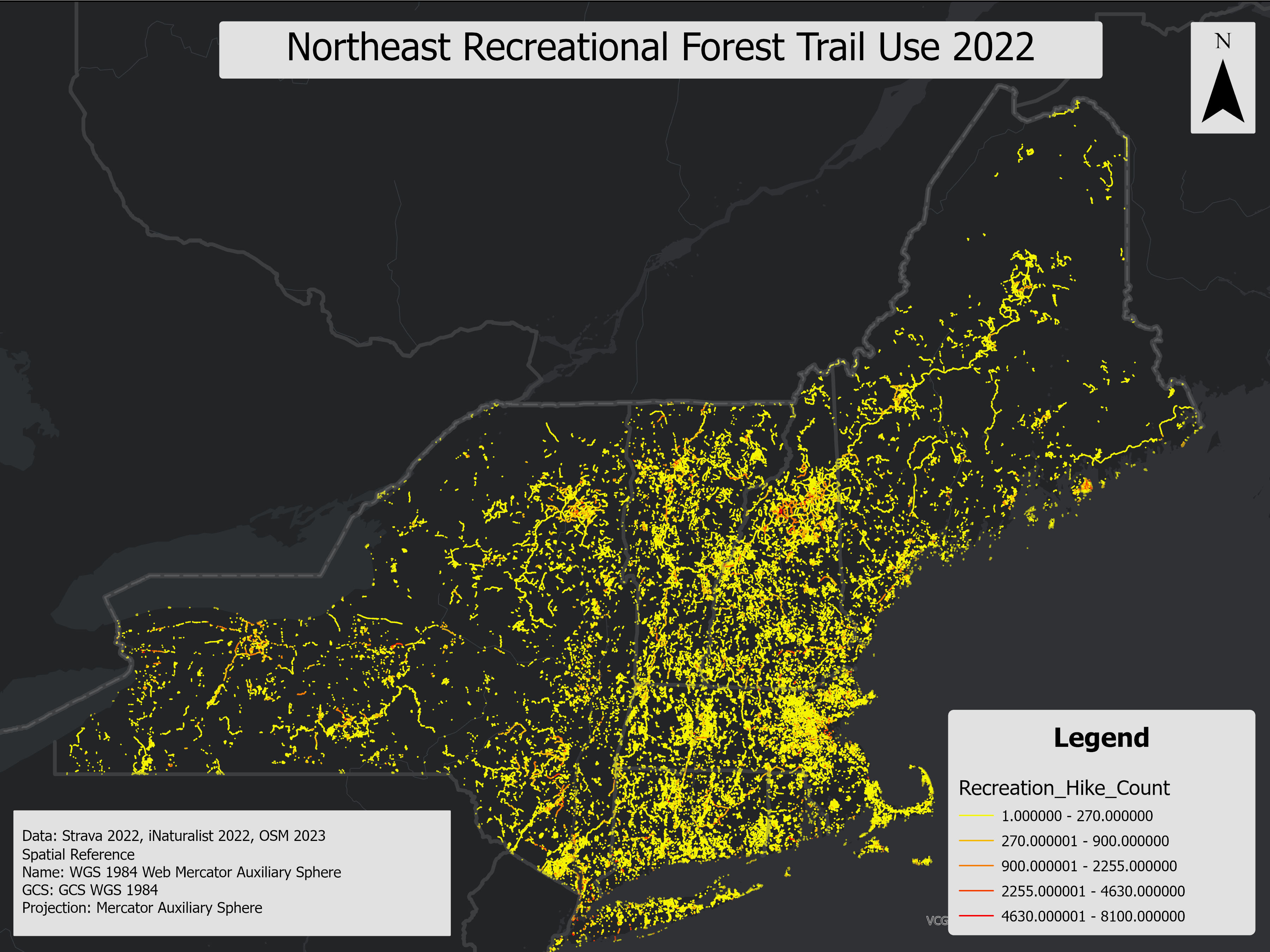
A geospatial line layer representing recreational soil use on forested permeable trials in 2022. Layer was generated using Open Street Map (OSM) ways data for permeable trails, and modeling using Strava hiking and biking use data, and NRCS web soil survey recreational modeled recreation suitability for ME, NY, NH, RI, CT, VT, and MA. The layer was clipped to the 2021 NLCD forest layer and filtered to permeable and likely permeable trails using OSM, therefore representation of only permeable trails within forested areas in the specified states.
*Release pending approval from Strava.
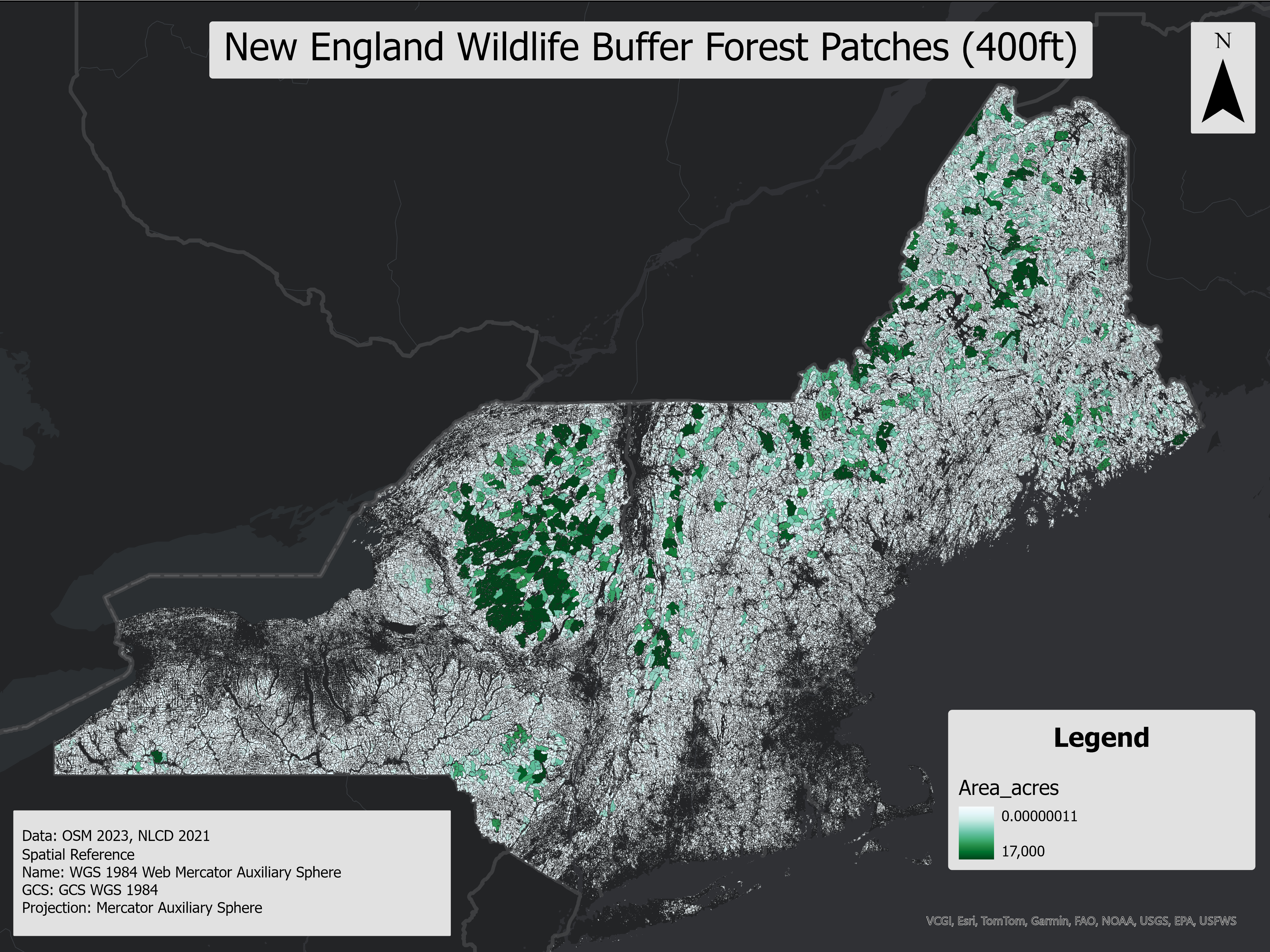
This polygon layer identifies forest patches clipped to 60 ft, 120 ft, and 400 ft buffer zones around OSM roads and trails, based on the methodology from the NH Fish and Game Trails for People and Wildlife report. These buffers represent potential zones of wildlife disturbance, with each buffer size corresponding to different wildlife species' sensitivity to human activity. Inter-connectivity between forest patches was not applied, leaving small, disjointed patches unaltered.
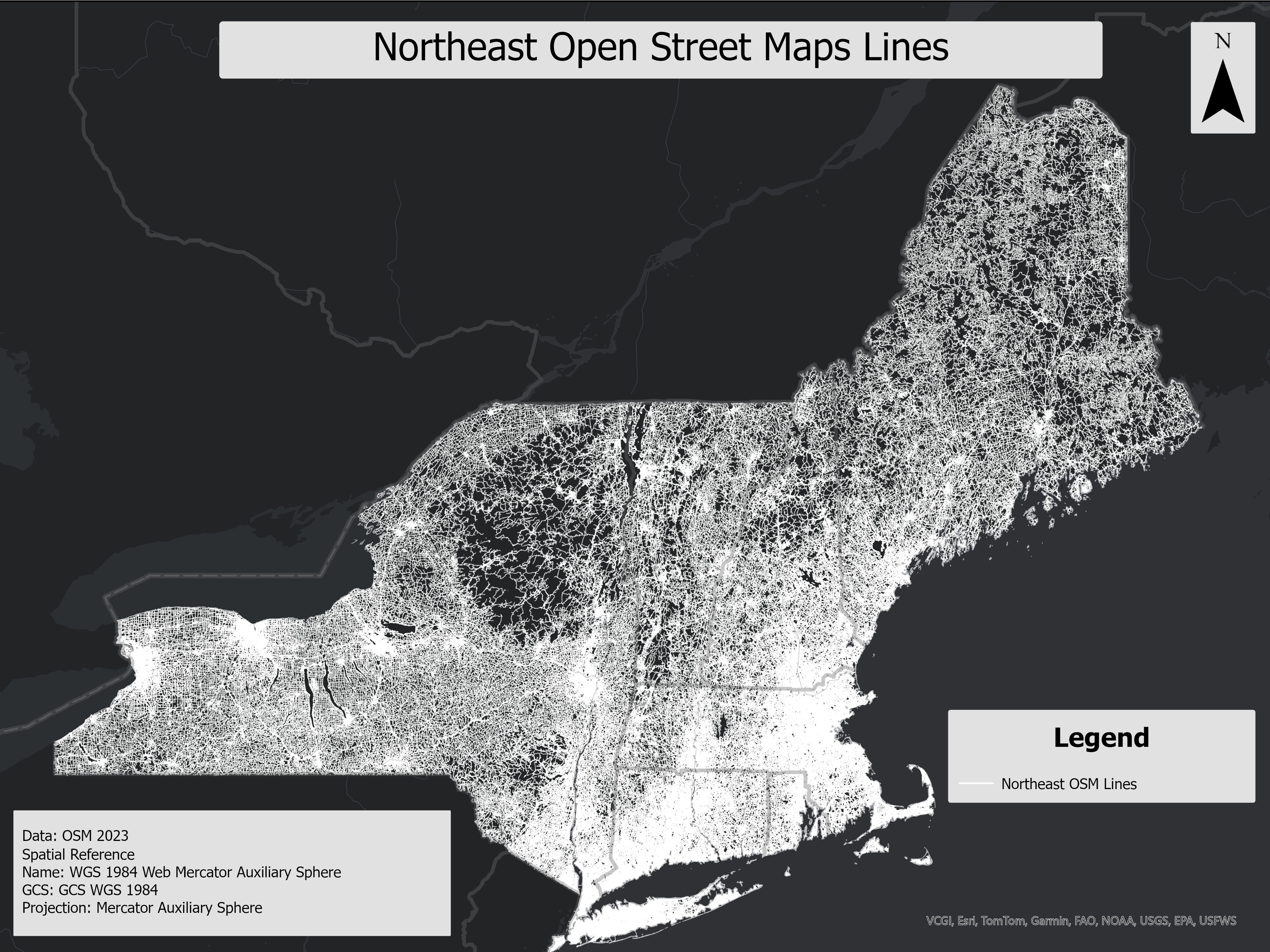
This layer contains line features from OpenStreetMap (OSM), representing various roads, trails, and paths. Key attributes include OSM ID, highway type, surface type, and shape length, making it useful for analyzing transportation networks and recreational infrastructure. The data is ideal for projects involving trail planning, infrastructure development, or environmental conservation efforts related to forest fragmentation and wildlife impact.
This layer represents forest recreation hotspots in the Northeast USA, derived from kernel density rasters using recreational data from Strava, iNaturalist, and OpenStreetMap (OSM) line features. It identifies high-use areas for both hiking and biking and highlights the impact of recreational activities on soil health by integrating soil recreational suitability. This analysis helps identify regions where high recreational usage coincides with poor soil conditions, providing insight into potential areas of environmental concern that might not be evident from raw recreational data alone.
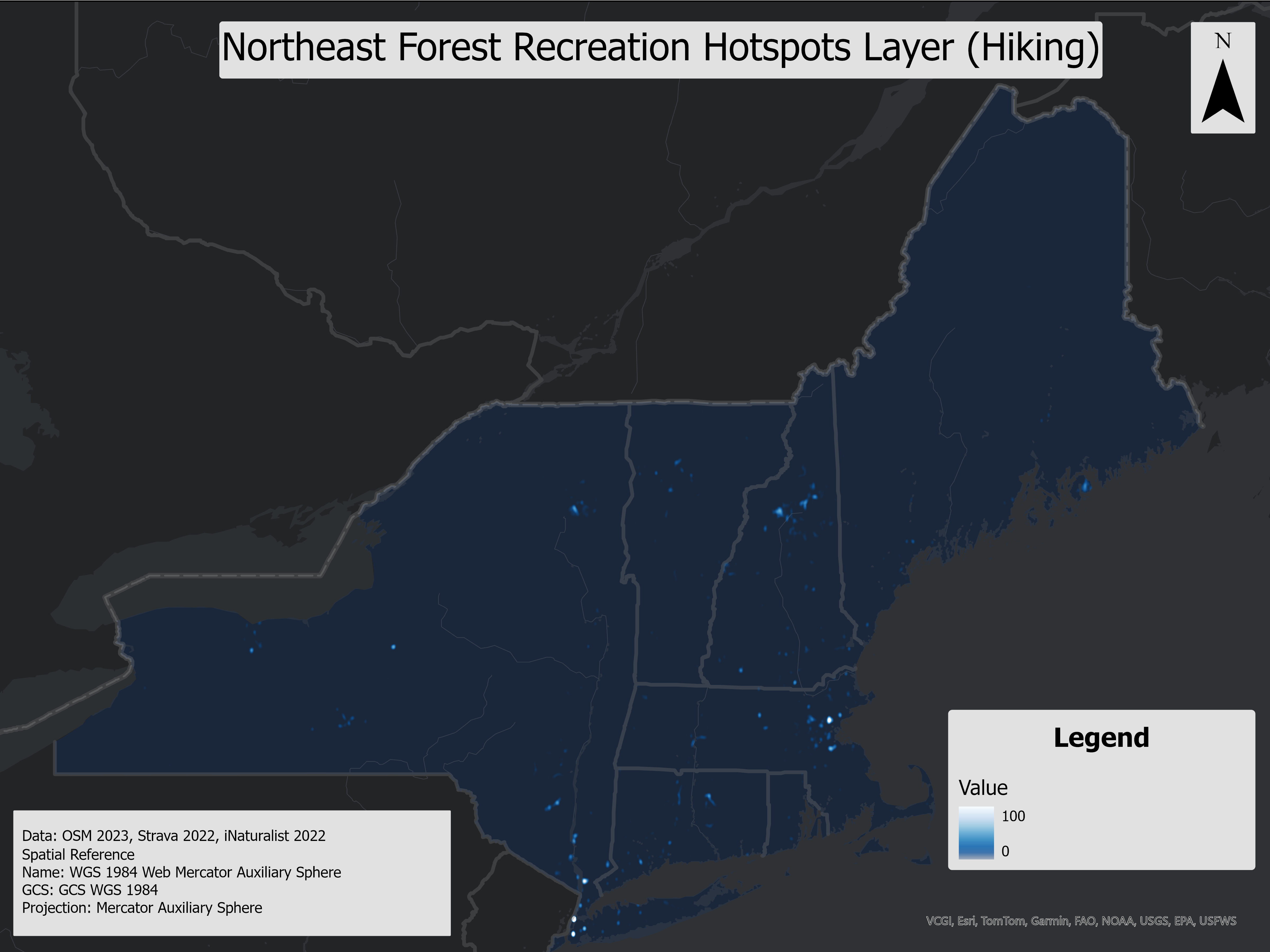
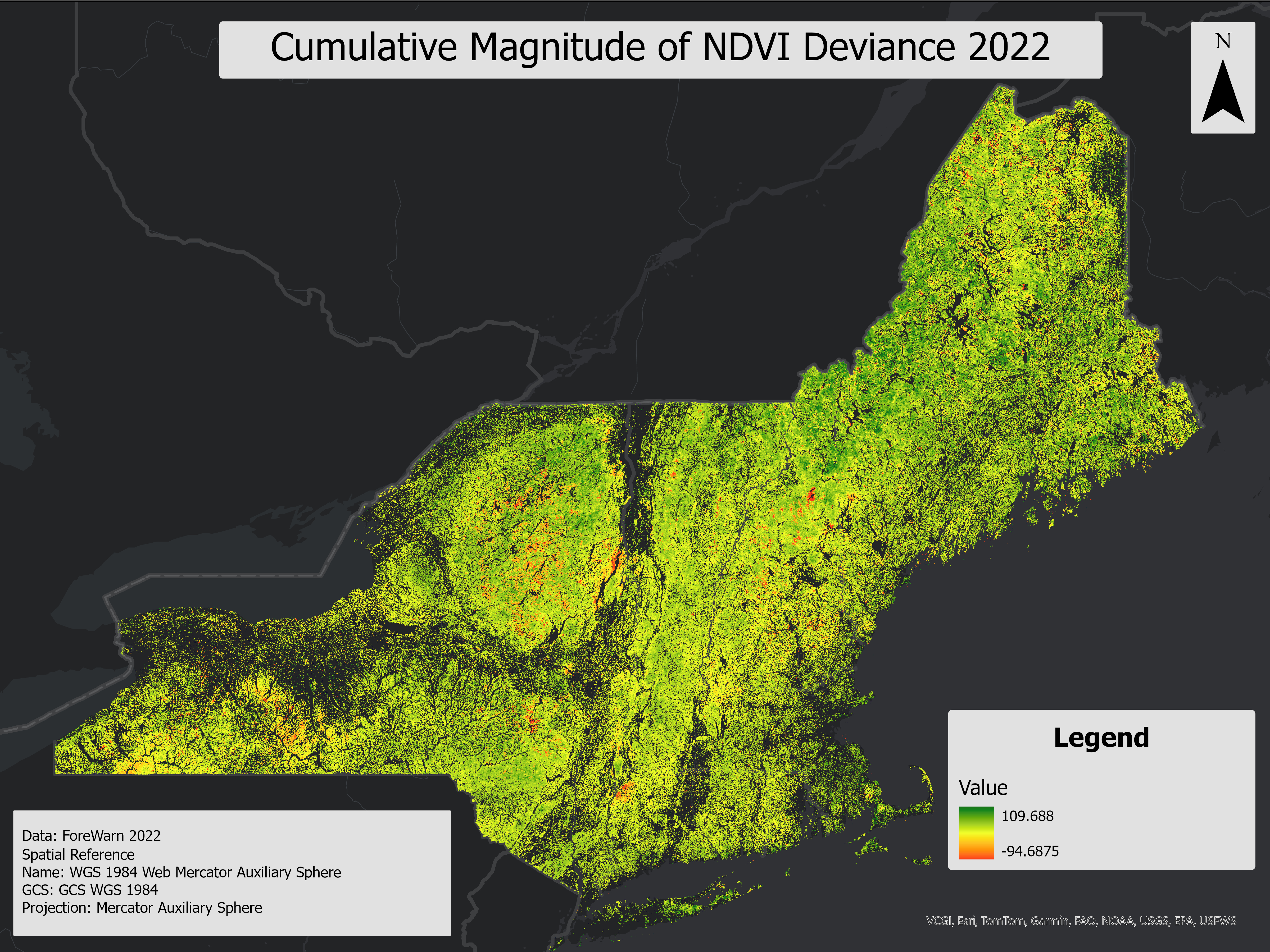
The Cumulative NDVI Deviance From Normal for 2022 growing season layer represents the maximum observed deviations in the Normalized Difference Vegetation Index (NDVI) over a series of time-based raster images. This layer is derived from ForWarn NDVI data and highlights areas with significant vegetation changes, providing critical insights for environmental monitoring and management.
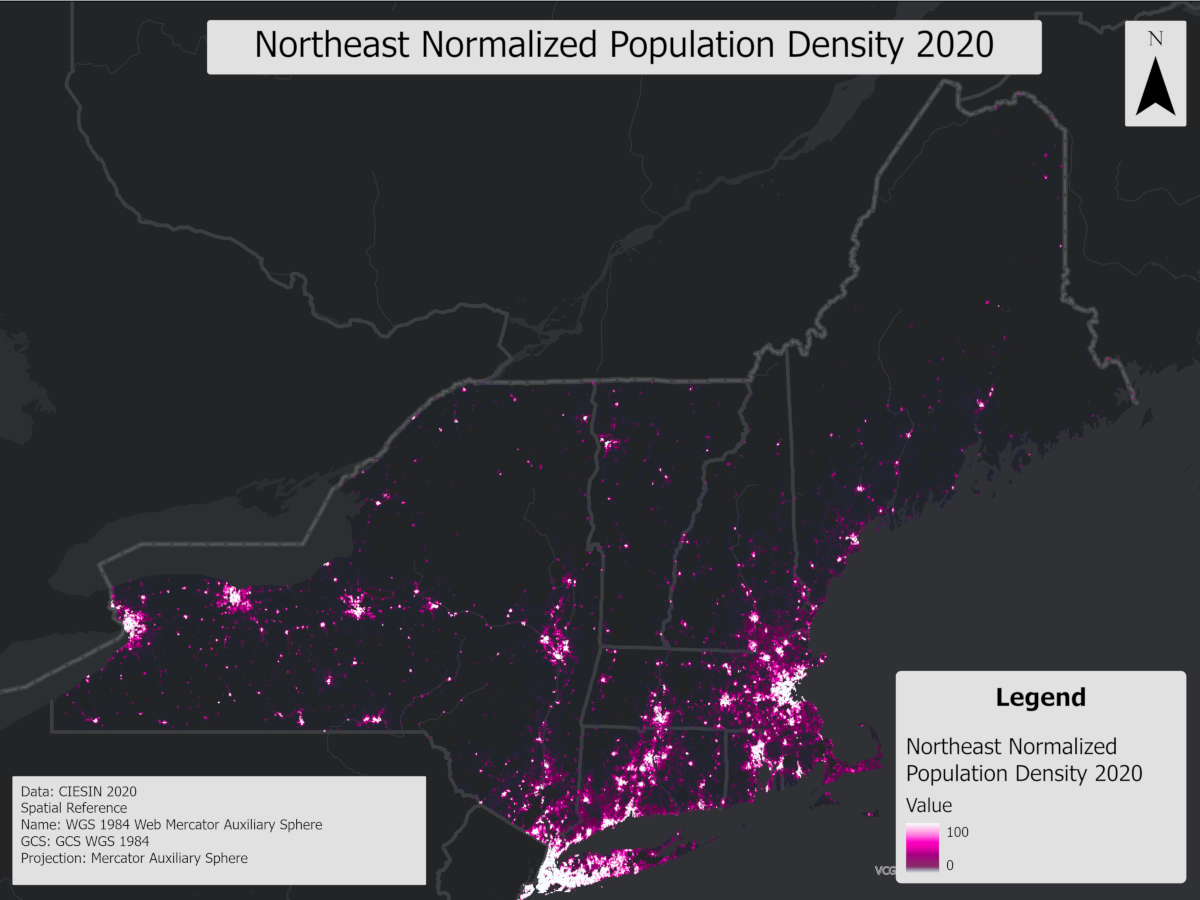
This raster represents 2020 population density from the Gridded Population of the World, Version 4 (GPWv4), clipped to the Northeast USA and normalized to a 0-100 scale. It facilitates the comparison between population distribution and recreational use in forests, helping to identify spatial outliers where recreation is disproportionate to local population.
Overview:
FEMC Working Groups provide input on the development and progress of active FEMC projects. FEMC staff organize and lead the working groups by inviting cooperators to join, defining project objectives, and developing plans to achieve the objectives.
Working Group Objective:
The Recreation Monitoring Working Group will consist of 5-7 individuals who have interest and expertise in monitoring and managing land for recreation. A variety of types of monitoring methods will be considered that capture how recreation impacts forest health. A data census among working group members or their network will also be conducted to gather any monitoring data that is already available.
FEMC staff will use the guidance provided by the Working Group to develop a list of monitoring recommendations to answer different questions about recreation impacts.
Working Group Outputs
The Working Group will conduct a review of monitoring methods to identify and implement pilot monitoring at field locations. The monitoring results will be shared back to the FEMC for inclusion in the development of a monitoring recommendations document. The monitoring data will also be gathered in a data census, along with any other available data, to begin developing a data resource.
FEMC may have some resources to support pilot programs in the implementation of monitoring methods, but will be dependent on timing and other needs.
The Working Group will review final products to ensure they meet the Working Group recommendations and provide an accurate analysis of the results.
For more information about participating on this Working Group, please review the Monitoring Recreation Working Group document and the FEMC Working Group Expectations document. You are welcome to contact Elissa Schuett (Elissa.Schuett@uvm.edu) with any questions.
Project Quick Facts
Start Date:
1/1/2022
End Date:
12/31/2024

